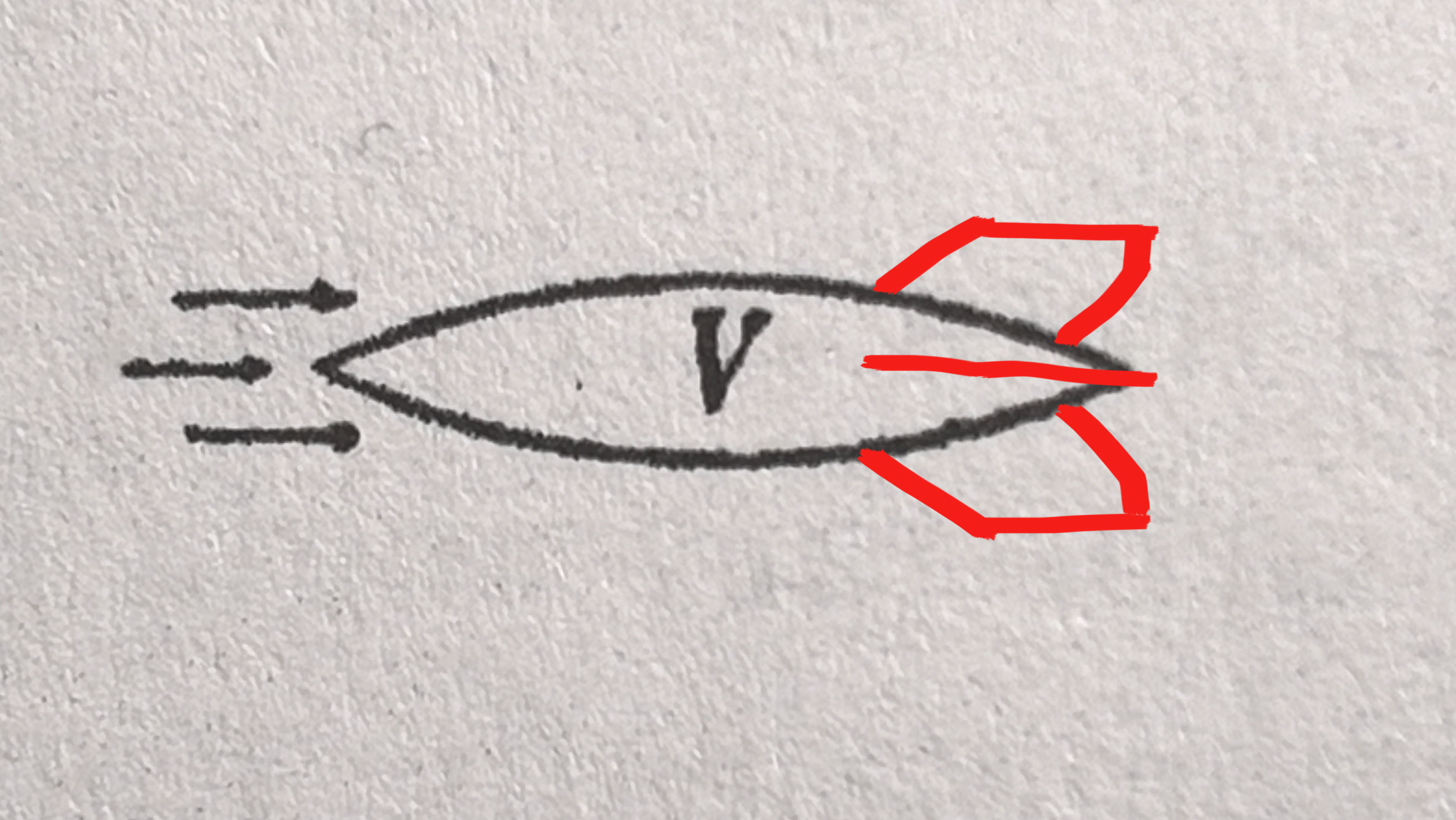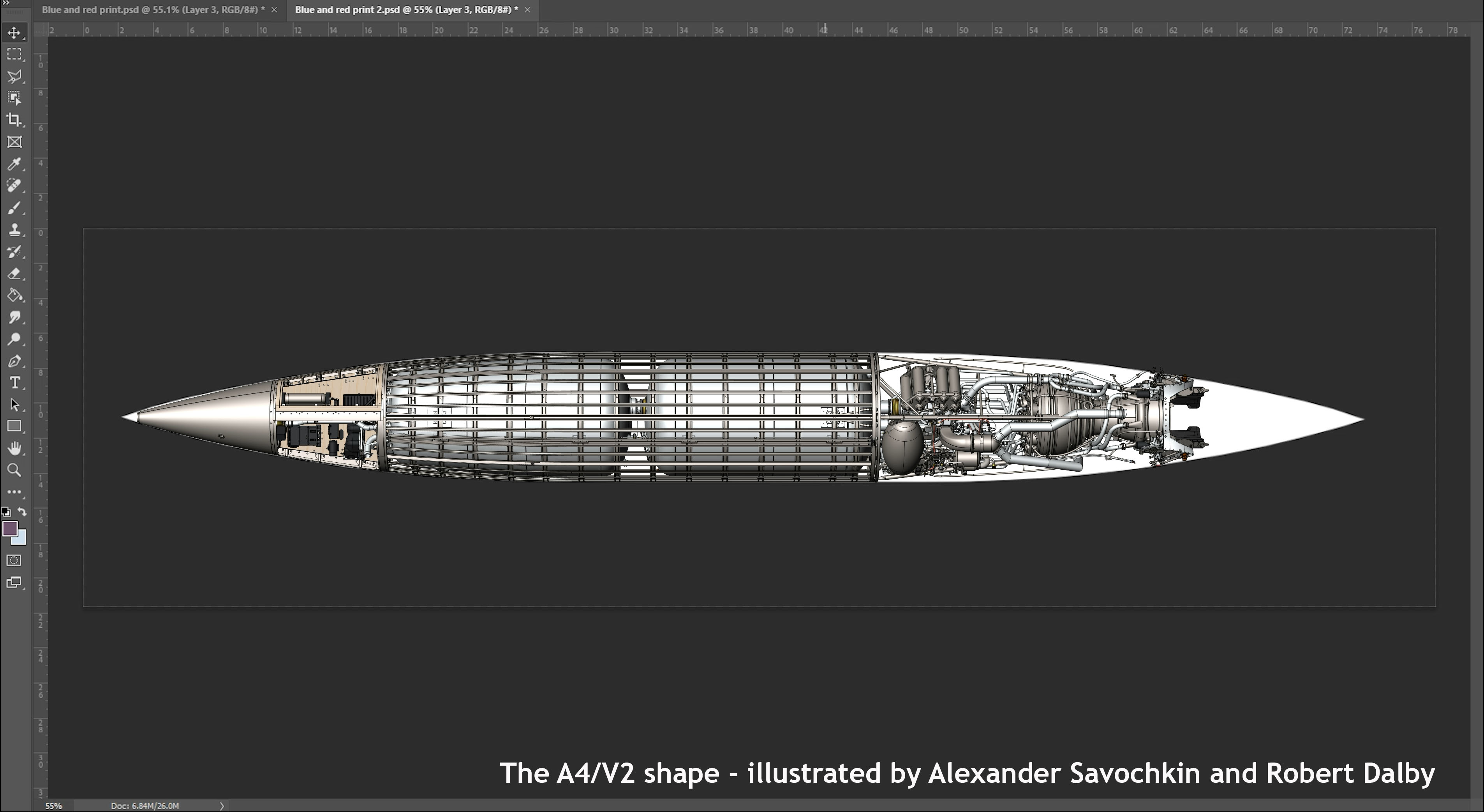
From early 20th-century ballistics to the shape of tomorrow
The V2 rocket is instantly recognisable by its extraordinary shape. But where did this revolutionary body shape come from, and why has it not been seen again in missile design since the 1950s? And yet, paradoxically, the shape in stylised form appears on millions of internet pages – why? We continue exploring the A4 / V2 rocket in detail by looking at the surprising origins of the V2’s core body shape. The first designs of the A3 and A5, both prototypes of the A4, had ballistic features emanating from the early 20th-century science of ballistics that the A4 would inherit. But crucially, some elements would change due to a supersonic flow theory revolution in 1930s America.
The complicated, double-ended tangent radius ogive torpedo, shape of the V2 missile’s core body had unfavourable consequences for the rocket’s manufacturing and assembly. The tapering fore and aft conic sections created increasingly tight internal spaces that made manufacturing and assembly unnecessarily difficult and also made vital late-war revisions virtually impossible to implement, compared with the simplicity of parallel tube body shapes of modern missiles.

Once the unique ballistics-inspired shape of the V2 rocket, as discussed in the video, is recognised, we begin to see the shape all around us. Used for everything from children’s wooden toys to business presentations as an image to signify speed, power, and, strangest of all, modernity. How many of those who use the image realise that the shape’s long history does not stop with the optimistic space rockets seen in 1950s science fiction and fantasy? The origins of the shape go back further to the ideas from early 20th-century ballistics used to help create the supersonic form of the 1940s rocket-powered robot bomb, the V2 rocket.

Literature and references
Cranz C.J. and Becker K. E. (1921) The Handbook of Ballastics, (pp. 75-82) Eng. ED HMSO London.
Neufeld M.J. (1995) The Rocket and the Reich, (pp. 5-28,42,50-54,73,82-85,97,113-127, 275-278, 285,292) Simon & Schuster Inc. New York
Siegmund-Schultze R. (2003) Military Work in Mathematics 1914-1945. Ch. Wolfgang Haack 1902-1994 [Source: Haack (1987), p. 23]
Haack W. (1941) Geschoßformen kleinsten Wellenwilderstandes, Der Lilienthal-Gesellschaft
Von Kármán T. and Moore N.E. (1932) Resistance of slender bodies moving with supersonic velocities, with special reference to projectiles ASME APM-54-27
Kurzweg H.H. Chapter 5: Aerodynamic Development of the V-2. In: Benecke, T and Quick, A (Eds). History of German Guided Missiles Development. Brunswick, Germany, 1957
Lundquist C.A., Coleman A.M. (2008) Rudolf Hermann, wind tunnels and aerodynamics (Acta Astronautica: Elsevier Science Vol 62, issue 8-9)

